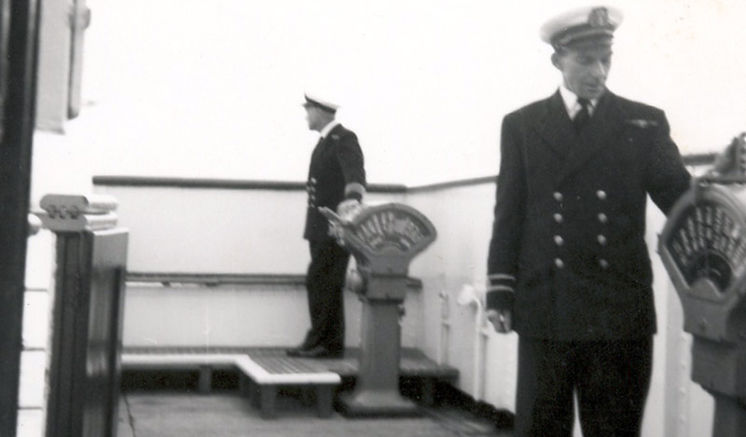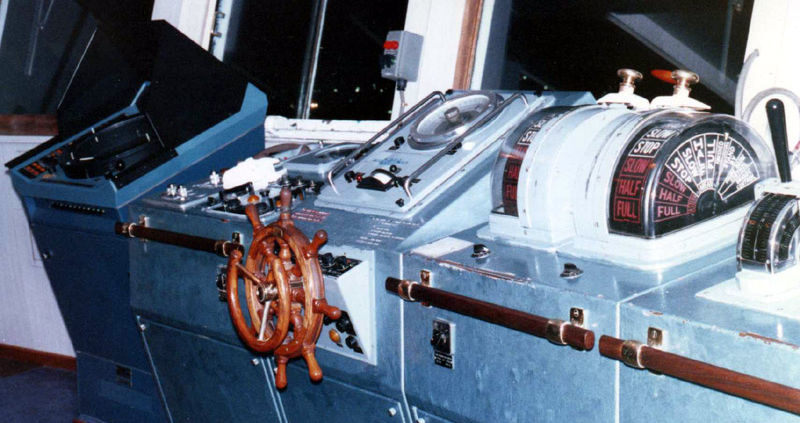SEALINK-HOLYHEAD
Justin Merrigan
Telegraphs and combinators

Telegraphs were initially operated by a chain similar to a bicycle chain. Due to the length involved and through constant use the chain would stretch and (say) slow ahead on the bridge would have the engine room telegraph pointer on the line between slow and half. The telegraphs were of course tested before every departure and any slackening of the chain would be picked up then, and Chadburn's informed.
Deep sea, the Blue Funnel ships, on which many future Holyhead officers served, were unique in having a "wrong - stop" command on the dial. The third mate on these ships would operate the bridge telegraph to the master's requirements, but on the Holyhead mail boats the Masters, and occasionally the Chief Officer, handled the telegraphs.
If the command was, say half ahead, it was important to swing the handle only in the ahead direction. The thinking being, that if the chain jammed or snapped, at least it would jam in the right direction. Junior officers would swing wildly from astern to ahead to give a good ring and had to be educated. The only times the telegraph was swung with gusto was when ringing Full Speed Away (FSA) after the pilot had departed and the ship was free of harbour confines; and Finished With Engines (FWE), especially when rung for the last time on arrival in home port after a long trip away.
Another ring was the "Double ring Full Astern", or Ahead. This told the engineers "We're in a strach give us all you've got". Masters who were constantly 'heavy' on the telegraphs were less likely to get as prompt a response as a Master who was naturally cautious. Engineers will of course disagree!

Back to the Railway ships and electric telegraphs, such as those on the Holyhead Ferry 1, replaced the old chain ones. These did not need to be swung. The handle was moved directly to the required position, which would be accurately replicated in the engine room, accompanied by a loud buzzing. It was difficult when first using them, not to give them a hearty swing!
The next step was combinators which directly controlled the variable pitch propellers from the bridge, using compressed air. The container ships Rhodri Mawr and Brian Boroime were the first purpose built Holyhead ships with direct bridge control.